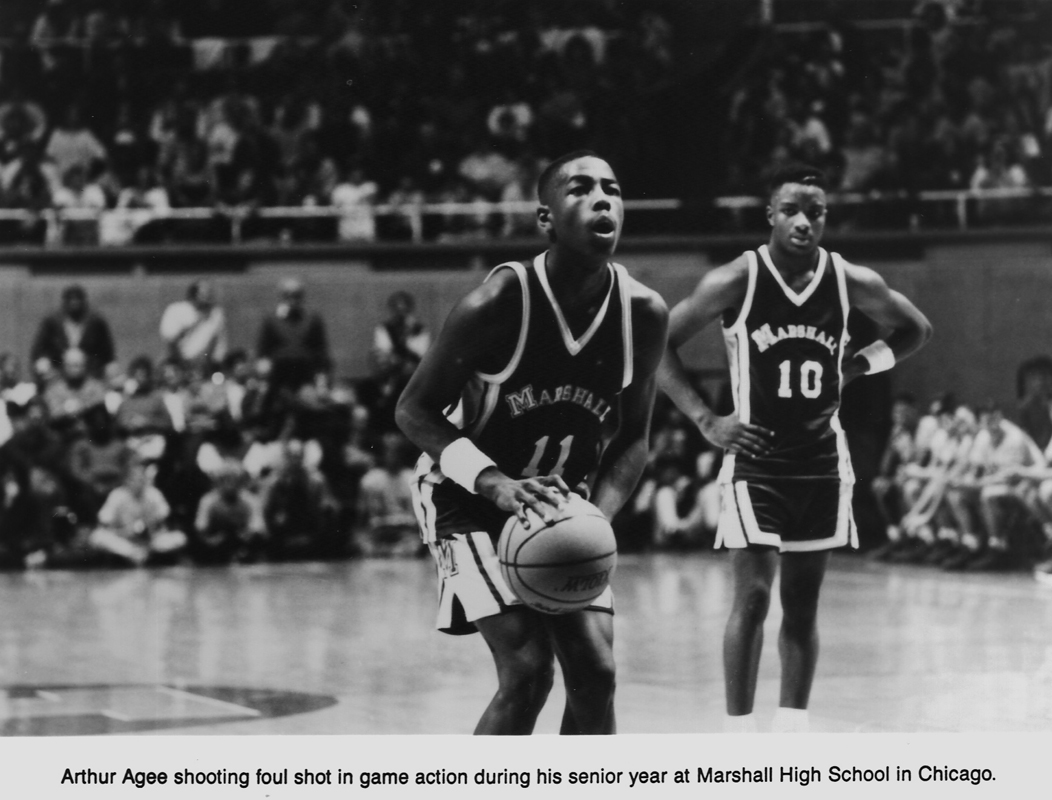By Shahnaz Mahmud
Once in a while a rare film comes along that demonstrates cinematic storytelling at its absolute finest, shaking us to our core and encouraging us to think differently about the world we live in. 1994’s Hoop Dreams accomplished that — and so much more.
The sports documentary, which chronicles the lives of two inner city youths in Chicago as they pursue dreams of playing professional basketball —and escaping their dangerous environment — is still perceived as seminal work.
It’s easy to understand why. The experience of watching the film unfold conjures so many emotions. You, of course, want to root for both Arthur Agee and William Gates, as they transform from boys to young men over the course of five years. There’s also so much you as the viewer bears witness to in the way of painful struggles of inner city living: poverty, drugs, teen pregnancy, and how when opportunity comes a-knocking, it can brutally be ripped away. Neither is immune to these forces.
For Agee, he’s forced to leave the posh, exclusive private school he was recruited into , which cruelly makes his already-strapped family pay back tuition before his transcripts will be released to his new public high school so he can graduate.
Serious injury hurts Gates’ chances at a future in the NBA. Pressures, both at home and school, force him to face the reality of what he truly wants for himself, which may not be basketball after all. Heartbreak is pretty constant throughout the movie for the protagonists and viewers alike. You get pulled into their lives, feeling angry at the many injustices they’re served, wanting to reach out and comfort them in some way, or somehow help them get onto the path to success. The victories in this film are less about making it on the basketball court, and more about hard-fought personal wins for the pair.
Since its premiere at the Sundance Film Festival, Hoop Dreams cut a new path for the documentary form both on and off the screen. In the late 1980s, filmmakers Steve James, producer-editor Frederick Marx, and producer-cinematographer Peter Gilbert decided to make a short doc: a 30-minute film focusing on the two talented junior high boys, who had been identified by recruiters as potential future NBA stars. As production was unfolding, the filmmaking trio recognized that what they were actually documenting was a story rife with big dreams and equally big heartache, and warranted a much deeper look. Thanks to the fact that the team forgoed using traditional film for Hoop Dreams and opting for the more readily available and financially beneficial, 30 minutes turned into 250 hours of footage, which ultimately resulted in this dazzling documentary 2 hours and 51 minutes in length.
The film premiered at the 1994 Sundance Film Festival and took the Audience Award for Documentary. But, its path to the big screen was shaky at best. James said it was near-to-impossible to raise the funding to produce the film, and TIME points to how Hoop Dreams spurred financiers to support and screen documentary films in theaters.
Hoop Dreams is also remembered as one of the greatest sports films ever — full stop. In a 1994 Washington Post review, staff writer Hal Hinson called it “the most powerful movie about sports ever made.” In 2007, The International Documentary Association named Hoop Dreams the best documentary of all time.
Hoop Dreams continues to educate and inspire to this day. Sundance has brought it back to the Festival twice, once in 2010, and then again in 2014. The latter saw a newly restored, high-definition digital master that resulted from a collaboration with Sundance Institute, the UCLA Film & Television Archive, the Academy Film Archive branch of AMPAS, and Kartemquin Films, which originally produced the film.




